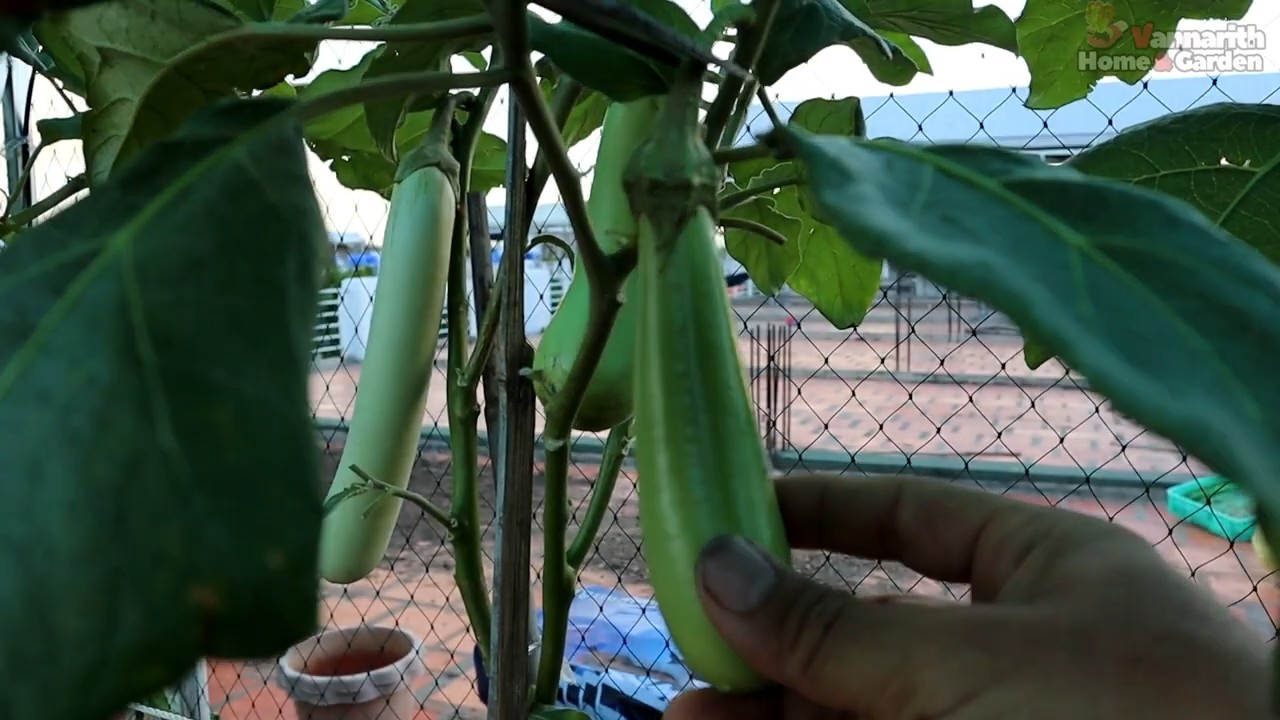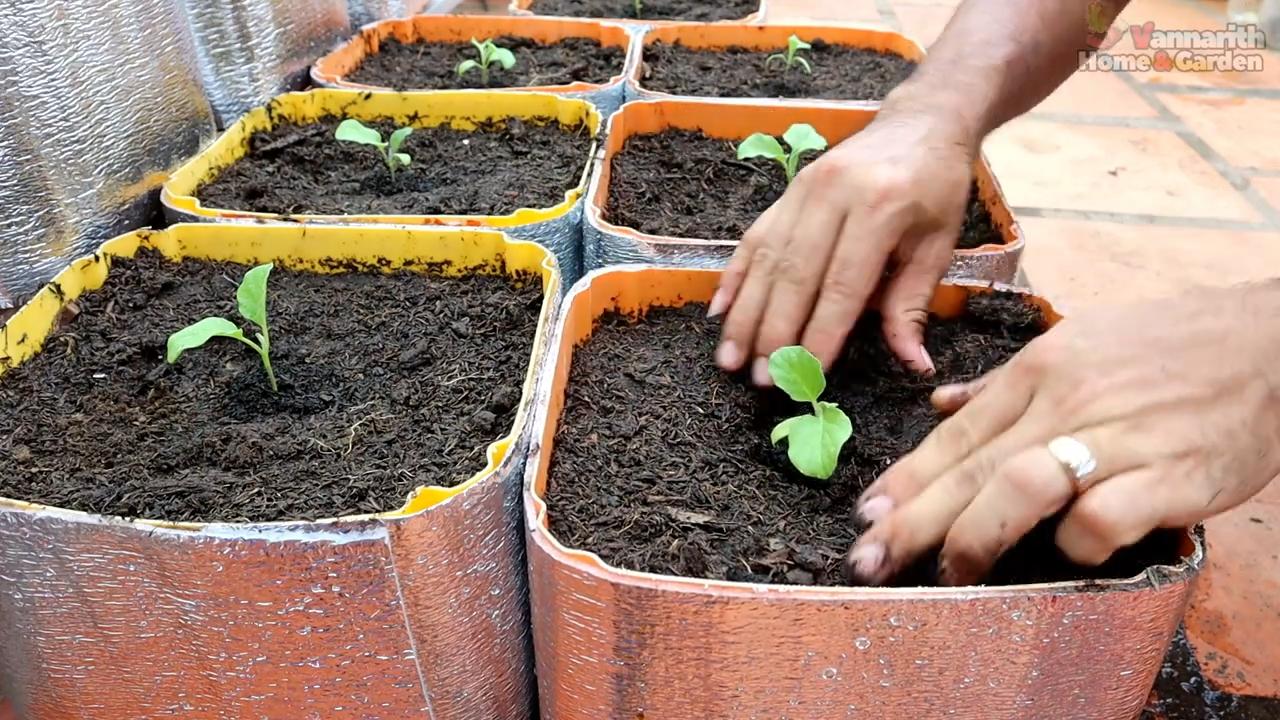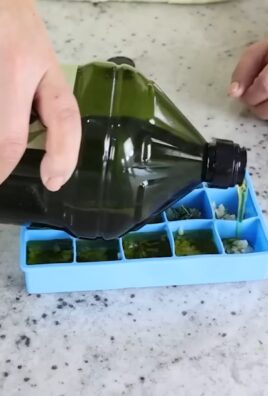Growing Eggplants Indoors Beginner? Absolutely! Have you ever dreamed of harvesting plump, juicy eggplants right from your windowsill, even when the snow is falling outside? It might sound like a far-fetched fantasy, but I’m here to tell you it’s totally achievable, even for those of us who are just starting out on our gardening journey!
Eggplants, with their vibrant purple hues and unique texture, have a rich history, cultivated for centuries in Asia and eventually making their way to Europe and the Americas. They’ve been a staple in countless cuisines, from hearty Mediterranean stews to flavorful Asian stir-fries. But traditionally, growing them meant having a sunny garden and a long, warm growing season. What if you don’t have that? That’s where the magic of indoor gardening comes in!
Let’s face it, not everyone has access to a sprawling outdoor garden. Apartment dwellers, city residents, or those living in colder climates often miss out on the joy of growing their own food. But with a few simple tricks and the right setup, you can successfully cultivate these beautiful plants indoors. This DIY guide is designed to empower even the most novice gardener to experience the satisfaction of growing eggplants indoors beginner-style. I’ll walk you through everything from selecting the right variety to providing the perfect lighting and care, ensuring you’ll be enjoying homegrown eggplants in no time. Get ready to unleash your inner green thumb and bring the bounty of the garden inside!

Growing Eggplants Indoors: Your Beginner’s Guide to a Bountiful Harvest
Hey plant friends! Are you tired of expensive eggplants from the supermarket? Or do you live in an area with a short summer but still want to harvest your own juicy eggplants? Then you’ve come to the right place! I’ll show you how you can easily grow eggplants indoors – even as a complete beginner. Don’t worry, it’s easier than you think!
What You Need: The Right Equipment for Growing Eggplants
Before we get started, we’ll obviously need the right equipment. Here is a list of everything you’ll need for successfully growing eggplants indoors:
- Eggplant seeds: Choose a variety that is suitable for growing in a pot. There are many great varieties bred specifically for indoor cultivation. It’s best to get information from a specialist retailer or online.
- Seed starting mix: This soil is particularly low in nutrients and loose, ideal for seed germination.
- Seed starting pots or trays: Small pots or trays are perfect for starting eggplant plants.
- Larger pots: As the plants grow, they will naturally need larger pots. Choose pots with a diameter of at least 30 cm (12 inches).
- All-purpose potting soil: This soil is richer in nutrients than seed starting mix and is well-suited for the growth of eggplant plants.
- Grow light: Eggplants need a lot of light, especially in winter. A grow light provides sufficient light even when the sun isn’t shining.
- Spray bottle: For moistening the soil.
- Watering can: For watering the plants.
- Fertilizer: Eggplants are heavy feeders and need regular fertilizer. Choose a fertilizer specifically for vegetables.
- Plant stakes: To support the plants as they grow larger.
- Optional: Heating mat: A heating mat can speed up seed germination.
Phase 1: Sowing – The Start of Your Eggplant Adventure
Sowing the seeds is the first step to your own eggplant paradise. Here’s how to do it:
- Prepare the seed starting pots: Fill the seed starting pots or trays with seed starting mix. Lightly press the soil down.
- Sow the seeds: Place 2-3 eggplant seeds in each pot or tray compartment. Cover the seeds with a thin layer of seed starting mix (about 0.5 cm or 1/4 inch).
- Moisten the soil: Gently moisten the soil with a spray bottle. The soil should be damp, but not wet.
- Cover the pots: Cover the pots or trays with plastic wrap or a lid. This creates a humid environment that promotes germination.
- Warm location: Place the pots in a warm spot (about 22-25°C or 72-77°F). A heating mat can be very helpful here.
- Be patient: The seeds need about 1-2 weeks to germinate. Check the soil regularly and moisten it if necessary.
Phase 2: Nurturing – From Seedling to Strong Plant
Once the seeds have germinated, the nurturing of the small eggplant plants begins. Here are the most important steps:
- Remove the cover: As soon as the first seedlings are visible, remove the plastic wrap or lid.
- Bright location: Place the pots in a bright location. If you don’t have a grow light, a spot by a window is ideal. However, make sure the plants are not in direct midday sun.
- Grow light: If you have a grow light, illuminate the plants for about 14-16 hours per day.
- Regular watering: Water the plants regularly, but not too much. The soil should always be slightly moist. Avoid waterlogging.
- Thin the plants: If multiple plants have grown in one pot, you need to thin them. Choose the strongest plant and carefully snip off the others at the soil line.
- Fertilizing: Start fertilizing about 2 weeks after germination. Use a fertilizer specifically for vegetables. Pay attention to the dosage instructions.
Phase 3: Repotting – More Space for the Eggplants
When the eggplant plants have grown larger, they need more space. Repotting is an important step for healthy growth.
- Prepare the larger pots: Fill the larger pots with all-purpose potting soil. Leave about 2-3 cm (1 inch) of space at the top.
- Remove the plants from the starter pots: Carefully remove the plants from their starter pots. Be careful not to damage the roots.
- Place the plants in the larger pots: Place the plants in the larger pots. Fill the pots with soil and press the soil down lightly.
- Water in: Water the plants thoroughly after repotting.
- Bright location: Place the pots in a bright location.
Phase 4: Care – Keeping Your Eggplants Healthy and Happy
Proper care is crucial for a bountiful harvest. Here are a few tips on how to keep your eggplants happy:
- Regular watering: Water the plants regularly, but not too much. The soil should always be slightly moist. Avoid waterlogging.
- Fertilizing: Eggplants are heavy feeders and need regular fertilizer. Fertilize the plants every 2-3 weeks with a fertilizer specifically for vegetables.
- Plant stakes: As the plants grow larger, they will need support. Use plant stakes to support the plants.
- Pollination: Eggplants are self-pollinating, but pollination by insects or by manually shaking the plants can improve the harvest.
- Pests and diseases: Keep an eye out for pests and diseases. If infested, you can use natural pesticides.
- Pruning: Regularly remove side shoots (suckers) to encourage the formation of fruit.
Phase 5: The Harvest – Finally, Your Own Eggplants!
After a few months of hard work, the time has finally come: the eggplants are ripe and can be harvested!
- Recognizing ripeness: The eggplants are ripe when they have a glossy skin and give slightly when pressed.
- Harvesting: Cut the eggplants with a sharp knife or scissors. Leave a small stem on the fruit.
- Enjoy: Now you can enjoy your own juicy eggplants! Use them in delicious dishes or give them as gifts to friends and family.
I hope this guide has helped you grow your own eggplants indoors. Have fun gardening and enjoy a bountiful harvest

Conclusion
So, there you have it! Growing eggplants indoors, especially for beginners, might seem daunting at first, but with the right approach and a little patience, you can absolutely enjoy the satisfaction of harvesting your own delicious, homegrown eggplants, even without a traditional garden. This DIY method, focusing on creating the optimal environment and providing consistent care, unlocks a world of possibilities for fresh, flavorful meals.
Why is this DIY trick a must-try? Because it empowers you to control the growing conditions, extending the eggplant season far beyond its natural limits. No longer are you beholden to the whims of the weather or the availability of fresh produce at the grocery store. You become the master of your own eggplant destiny! Plus, there’s an undeniable joy in nurturing a plant from seed to fruit, witnessing the miracle of growth firsthand. It’s a rewarding experience that connects you to nature and provides a tangible sense of accomplishment.
But the benefits don’t stop there. Growing your own eggplants indoors allows you to choose from a wider variety of cultivars than you might find commercially. Experiment with different shapes, sizes, and colors – from the classic Black Beauty to the slender Japanese varieties or the vibrant Thai eggplants. Imagine the culinary possibilities!
Variations and Suggestions:
* Grafting: For even greater disease resistance and vigor, consider grafting your chosen eggplant variety onto a hardier rootstock. This is a more advanced technique, but it can significantly improve your chances of success, especially if you’ve struggled with soilborne diseases in the past.
* Hydroponics: If you’re feeling adventurous, explore hydroponic systems for growing eggplants indoors. This soilless method can provide even more precise control over nutrient delivery and water management, potentially leading to faster growth and higher yields.
* Vertical Gardening: Maximize your space by utilizing vertical gardening techniques. Trellising or staking your eggplant plants will not only support their growth but also create a visually appealing display.
* Companion Planting: Even indoors, you can incorporate companion plants to deter pests and attract beneficial insects. Basil, marigolds, and nasturtiums are all excellent choices for growing alongside your eggplants.
* Pollination Assistance: While eggplants are self-pollinating, gently shaking the plants or using a small brush to transfer pollen between flowers can increase fruit set, especially in the absence of natural pollinators.
We wholeheartedly encourage you to give this DIY eggplant growing method a try. Don’t be afraid to experiment, learn from your mistakes, and adapt the techniques to suit your specific environment and resources. The journey of growing your own food is a rewarding one, filled with challenges and triumphs.
And most importantly, we want to hear about your experience! Share your successes, your struggles, and your tips with us in the comments below. Let’s create a community of indoor eggplant growers, supporting each other and learning together. What varieties did you choose? What challenges did you face? What advice would you give to other beginners? Your insights are invaluable and can help others embark on their own eggplant-growing adventures. So, go ahead, get your hands dirty, and start growing your own delicious eggplants indoors today!
Frequently Asked Questions (FAQ)
Q: What is the best time of year to start growing eggplants indoors?
A: Ideally, you should start your eggplant seeds indoors 8-10 weeks before the last expected frost in your area. This allows the seedlings to develop a strong root system before being transplanted into larger containers or, if you choose, moved outdoors once the weather warms up. If you are growing eggplants entirely indoors, you can technically start them at any time of year, as you are controlling the environment. However, providing supplemental lighting during the shorter days of winter is crucial for optimal growth.
Q: What kind of soil should I use for growing eggplants indoors?
A: Eggplants thrive in well-draining, nutrient-rich soil. A good starting point is a high-quality potting mix specifically formulated for vegetables. You can also amend the potting mix with compost or other organic matter to improve its fertility and drainage. Avoid using garden soil, as it can be too heavy and may contain pests or diseases. A slightly acidic to neutral pH (around 6.0 to 7.0) is ideal.
Q: How much light do eggplants need when grown indoors?
A: Eggplants are sun-loving plants and require at least 6-8 hours of direct sunlight per day. If you don’t have a sunny south-facing window, you’ll need to supplement with grow lights. LED grow lights are a great option, as they are energy-efficient and provide the full spectrum of light that plants need for photosynthesis. Position the grow lights a few inches above the plants and adjust the height as they grow.
Q: How often should I water my indoor eggplant plants?
A: Water your eggplant plants regularly, keeping the soil consistently moist but not waterlogged. Check the soil moisture by sticking your finger about an inch deep. If the soil feels dry, it’s time to water. Avoid overwatering, as this can lead to root rot. Water deeply, allowing the excess water to drain out of the bottom of the pot. Reduce watering frequency during the winter months when plant growth slows down.
Q: What kind of fertilizer should I use for indoor eggplants?
A: Eggplants are heavy feeders and require regular fertilization to produce abundant fruit. Start fertilizing your seedlings a few weeks after they emerge, using a balanced liquid fertilizer diluted to half strength. Once the plants start flowering, switch to a fertilizer that is higher in phosphorus and potassium to promote fruit development. Follow the instructions on the fertilizer label carefully to avoid over-fertilizing. Organic options like compost tea or fish emulsion are also excellent choices.
Q: How do I pollinate my indoor eggplant plants?
A: While eggplants are self-pollinating, indoor plants may benefit from a little assistance. You can gently shake the plants or use a small, soft brush to transfer pollen from one flower to another. This is especially important if you don’t have any natural pollinators (like bees) in your home. Do this in the morning when the pollen is most viable.
Q: What are some common pests and diseases that affect indoor eggplants?
A: Common pests that can affect indoor eggplants include aphids, spider mites, and whiteflies. Regularly inspect your plants for signs of infestation and take action promptly. You can try spraying the plants with insecticidal soap or neem oil. Good air circulation can also help prevent pest problems. Common diseases include fungal diseases like powdery mildew and root rot. Avoid overwatering and provide good air circulation to prevent these diseases. If you notice any signs of disease, remove the affected leaves or plants immediately.
Q: How long does it take for eggplants to mature and produce fruit?
A: The time it takes for eggplants to mature and produce fruit varies depending on the variety and growing conditions. Generally, it takes about 60-80 days from transplanting for eggplants to start producing fruit. Be patient and continue to provide consistent care, and you’ll be rewarded with a bountiful harvest.
Q: How do I know when my eggplants are ready to harvest?
A: Eggplants are typically ready to harvest when they are firm, glossy, and have reached their mature size and color. The skin should be smooth and unblemished. Gently press the skin with your thumb; if it springs back, the eggplant is ripe. Use a sharp knife or pruning shears to cut the eggplant from the plant, leaving a short stem attached.
Q: Can I grow eggplants in containers indoors permanently?
A: Yes, you can absolutely grow eggplants in containers indoors permanently, provided you meet their needs for light, water, nutrients, and space. Choose a large enough container (at least 5 gallons) to accommodate the plant’s root system. Regular pruning and maintenance will also help keep the plant healthy and productive. Remember that indoor growing requires more active management than outdoor gardening, but the rewards of fresh, homegrown eggplants are well worth the effort.




Leave a Comment